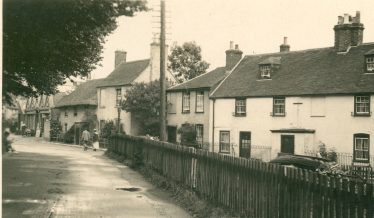The Poor House

Following the break with Rome 1533-1537, the dissolution of the monasteries led to the ancient parish being left with the duty of relieving its own poor, starting in Elizabeth I’s reign with the first Poor Relief Act (1597) and gradually the ancient parish began performing both ecclesiastical and civil roles.
Overseers of every parish could raise what money they needed by local taxation. With this they provided materials to the poor to allow them to work and support themselves. The overseers also organised apprenticeships for children, relief for people with disabilities, and the erection of poorhouses for the aged and infirm.
The earliest surviving local Overseers’ Accounts (1791) point to a long-established poorhouse in Milford. Its final location was near the bridge over the Danes Stream at the western end of the village in today’s Bay Trees together with adjacent thatched cottages. It had to be rebuilt in 1825 following storm damage.
The Poor Law Amendment Act of 1834 centralised relief of the poor nationwide and allowed parishes to group as Unions for economies of administration and Milford joined with neighbouring parishes to form a Union Workhouse at Lymington. The former poorhouse property was sold to Mrs. Whitby in 1836.
Links
http://www.workhouses.org.uk/records/
References
Dr. V. D. Harris “Poorhouses in England with special reference to Milford Poorhouse and the Relief of the Poor in the Parish”. MOSHRS Occasional Magazine Vol.3 No.5 (June 1926) pp.3-31.
Peter Higginbotham, “The Workhouse Encyclopedia”, The History Press, Gloucestershire, 2012.
Records
If you would like to research Milford’s history, take a look in our archive.
If you have some documents, images or artefacts which tell some of Milford’s history and would like to donate them to the archive then follow up here.





No Comments
Add a comment about this page